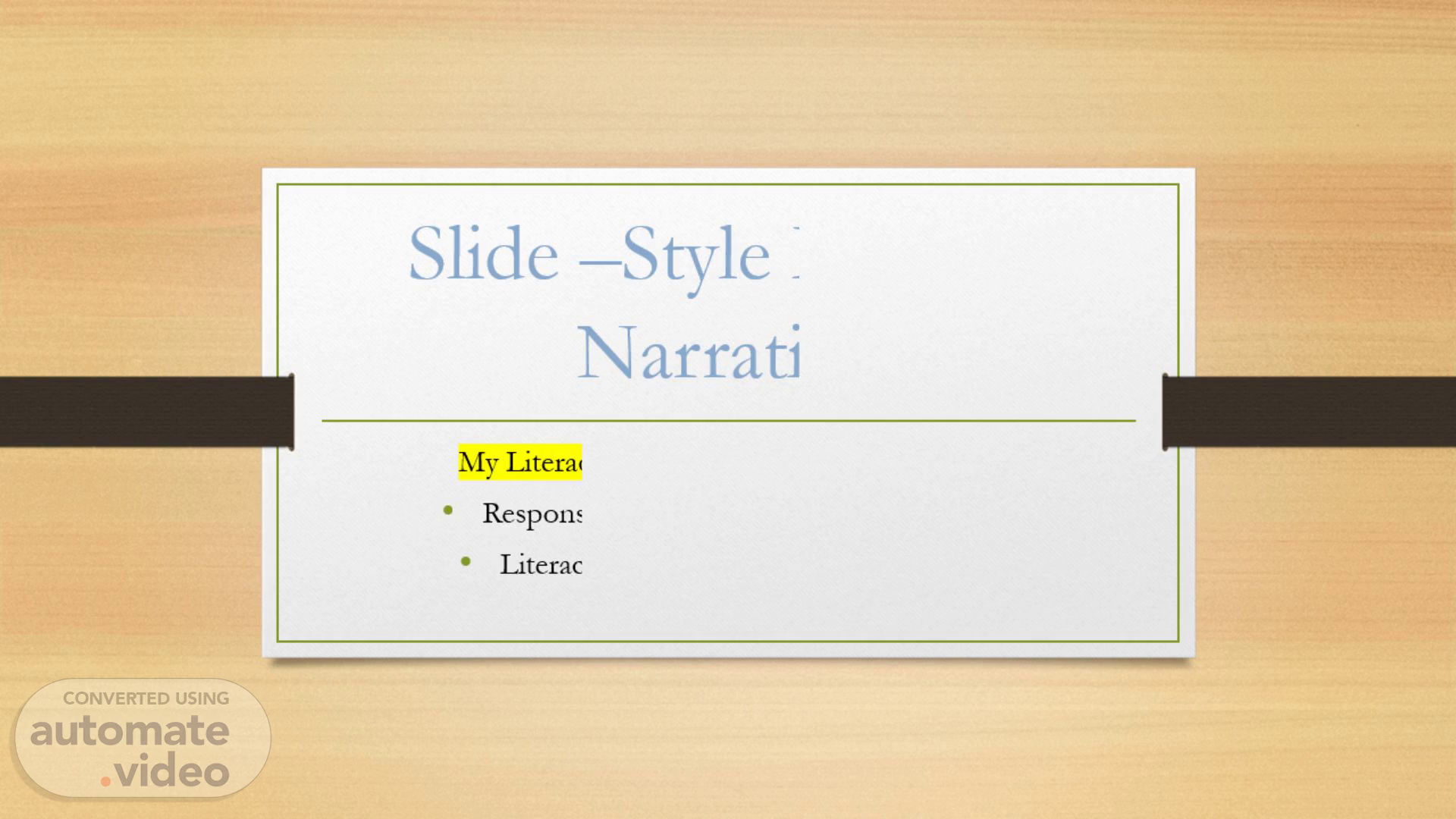Scene 1 (0s)
Slide –Style Literacy Narrative. My Literacy Journey as the Eldest Daughter Responsibility to guide my younger siblings Literacy as learning, teaching, and caring.
Scene 2 (10s)
Childhood and Beginnings(Linguistic). Being the eldest daughter in my family has shaped my literacy journey in many ways. From a young age, I understood that my role was not only to learn for myself but also to help guide my younger siblings. Literacy became more than just reading and writing-it became a way for me to show responsibility and leadership at home. When I first started school, I struggled with understanding some words and sentences, especially because English was not my first language. I remember sitting with books, slowly sounding out the words and sometimes feeling embarrassed when I couldn’t read as smoothly as others. But I also felt determined. I told myself that if I could become good at reading and writing, I could help my siblings avoid the struggles I faced..
Scene 3 (43s)
Growth and Confidence (Linguistic). Over time, my literacy skills grew. I learned to write short essays, read books with better understanding, and even practice speaking clearly. This gave me confidence not only in school but also in my family role. Whenever my younger siblings had homework, I felt proud that I could sit with them, explain new words, and guide them through their reading. Literacy, to me, became a tool for care and love. It was not just about school grades but about building a stronger connection with my family. Now, I continue to use my literacy skills everyday. Whether I am writing assignments, helping with school projects, or even reading instructions at home, I see literacy as an important key to my identity. It has made me stronger as a student, more responsible as a daughter, and more supportive as an older sister..
Scene 4 (1m 20s)
Visual Literacy(Visual). When I think about my literacy journey, I see it in images and colors. I imagine myself as a young girl holding a book that seemed too big for me. The letters on the page looked like puzzles I had to solve. At first, the pages seemed filled with confusing shapes, but as I practiced , those shapes turned into words and meanings. Another picture in my mind is me sitting at the table with my younger siblings. I often used drawings, underlines, and colors to make their learning easier. For example, I would highlight important words with bright colors so they could remember them . I also drew simple pictures to explain new ideas, like a sun for day or a moon for night. These visuals made literacy fun for both me and them. Today, when I share my literacy story, I still want to include visuals. I imagine using photos of books, images of children learning, and colorful designs to show how reading and writing have been a journey of growth and care. Just as pictures helped me explain ideas to my siblings, they can also help me share my story in a clear and interesting way..
Scene 5 (2m 7s)
Organizing My Story(Spatial). The way I organize my story is also important. Literacy itself taught me how to structure ideas step by step, and I want to show my journey in the same way. For example, when I create slides or projects, I use clear headings like “Childhood”, “Challenges”, and “Growth” so that the story flows in order. I believe space also matters in telling my story. If words are too crowded, the message becomes confusing. That is why I always leave room between points, add simple shapes to divide sections, and use bullet points when necessary. These small details make it easier for the audience to follow my literacy journey without feeling lost. When I help my siblings, I also use the spatial method. If we are studying together, I separate their tasks into smaller parts. First, we read a paragraph. Next, we discuss the meaning. Finally, we write a few sentences about it. By breaking things into steps and giving space between them, I make learning feel easier and less stressful. In the same way, my literacy narrative is not one big story but a journey told in clear sections. This organization shows how literacy shaped me as the eldest daughter, a student, and a guide for my siblings..
Scene 6 (2m 58s)
Conclusion. My literacy journey has always been connected to my role in the family. As the eldest daughter, I felt the need to do well in reading and writing so that I could be a good example and teacher for my siblings. Using words, visuals, and organization, I have learned to make literacy not only my personal achievement but also a gift I can share with others. Literacy is not just about me; it is about lifting up the people around me..
